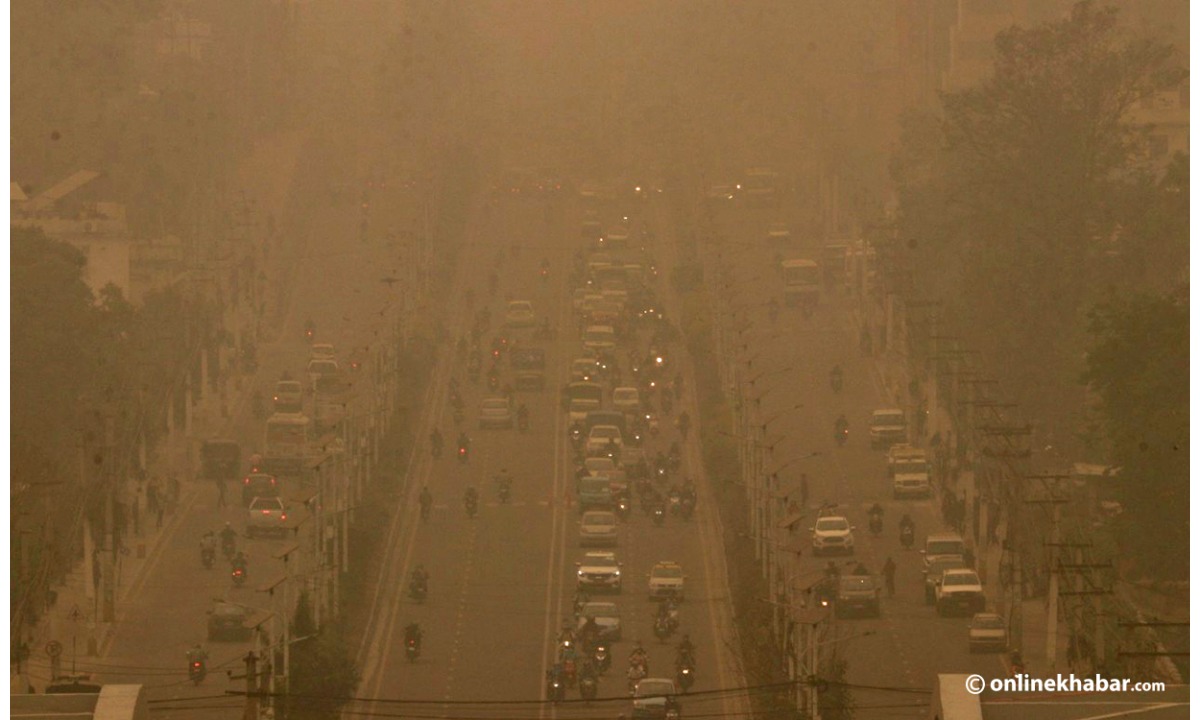Kathmandu Valley is experiencing worsening air quality, prompting environmental experts to call for urgent action. Experts at the Nepal Forum of Environmental Journalists (NEFEJ) event, ‘Hakahaki Debate: Air Pollution Chaos – Who is Responsible?’ highlighted the increasing pollution and urged authorities to act immediately.
Main Causes of Air Pollution in Nepal
1. Forest Fires and Agricultural Burning
- Wildfires occur every year during the dry season.
- Burning of agricultural waste and garbage in open areas adds to pollution.
2. Vehicle and Industrial Emissions
- Old vehicles with outdated emission standards (Euro 1 and Euro 3) contribute heavily.
- Industrial factories continuously release toxic smoke into the air.
3. Seasonal Air Quality Decline
- Pollution levels increase between January and April each year.
- Air Quality Index (AQI) often reaches hazardous levels, making it unsafe for people.
Health Impacts of Air Pollution
- Increasing cases of respiratory diseases like asthma and bronchitis.
- Eye infections such as conjunctivitis and dryness due to polluted air.
- Higher risk for children, pregnant women, and chronically ill patients.
- Reduced life expectancy by 4.8% due to pollution-related illnesses.
Government Warnings and Response
- The Department of Environment warns of continued high pollution levels until mid-June.
- Over 253 forest fires were reported in Nepal, affecting 45 districts.
- Ministry of Health reports an increase in respiratory illnesses across the country.
Challenges in Pollution Control
- Lack of proper implementation of past policies and action plans.
- Despite collecting 3 billion rupees in pollution control revenue, little progress has been made.
- More than 50% of vehicles fail pollution tests, including government vehicles.
Urgent Solutions Needed
1. Stronger Regulations and Monitoring
- Regular pollution testing for vehicles and factories.
- Stricter laws to control emissions from industries and vehicles.
2. Public Awareness and Cooperation
- Encouraging people to use public transport and electric vehicles.
- Reducing waste burning and promoting proper waste management.
- Planting more trees to improve air quality.
3. National Action Plan for Long-Term Solutions
- Creating a clear strategy to address pollution across Nepal.
- Improving coordination between government agencies and local authorities.
- Ensuring proper use of funds allocated for environmental protection.
Air pollution in Nepal is a growing crisis affecting health, the environment, and the economy. Experts stress the need for immediate action from both the government and the public to reduce pollution and protect future generations. Effective policies, public participation, and long-term planning are essential for cleaner air and a healthier Nepal.


Be First to Comment